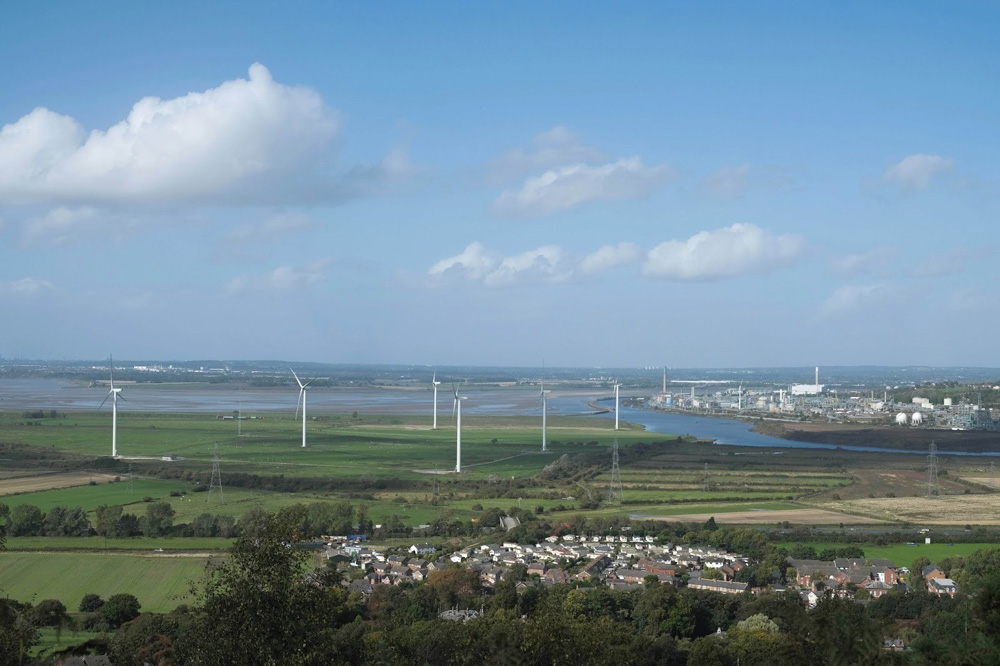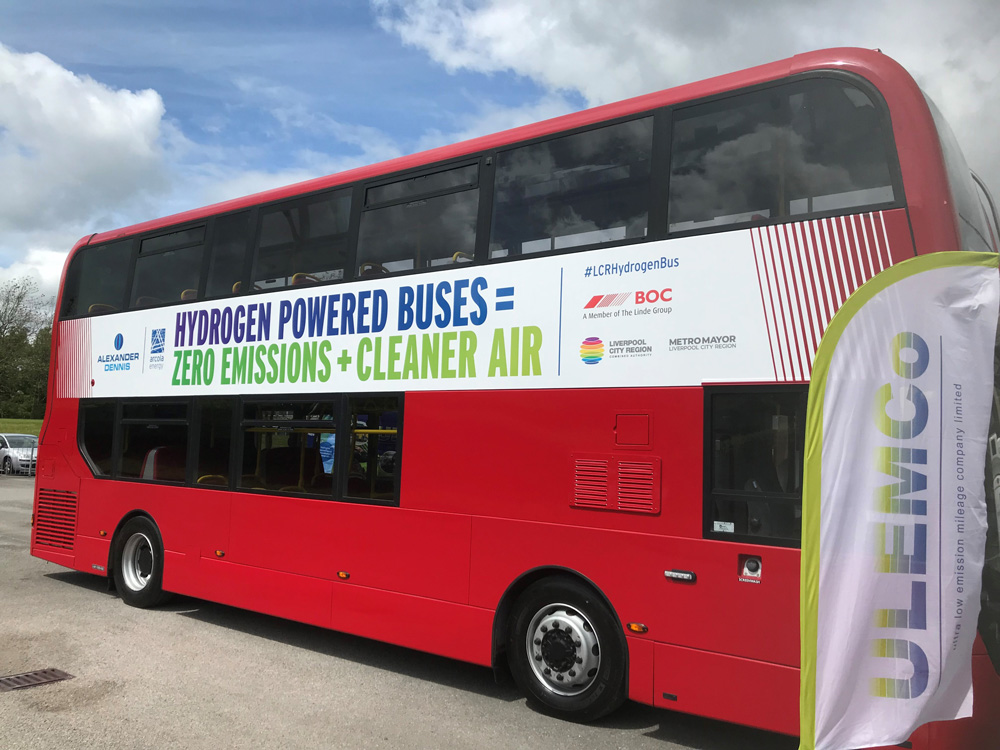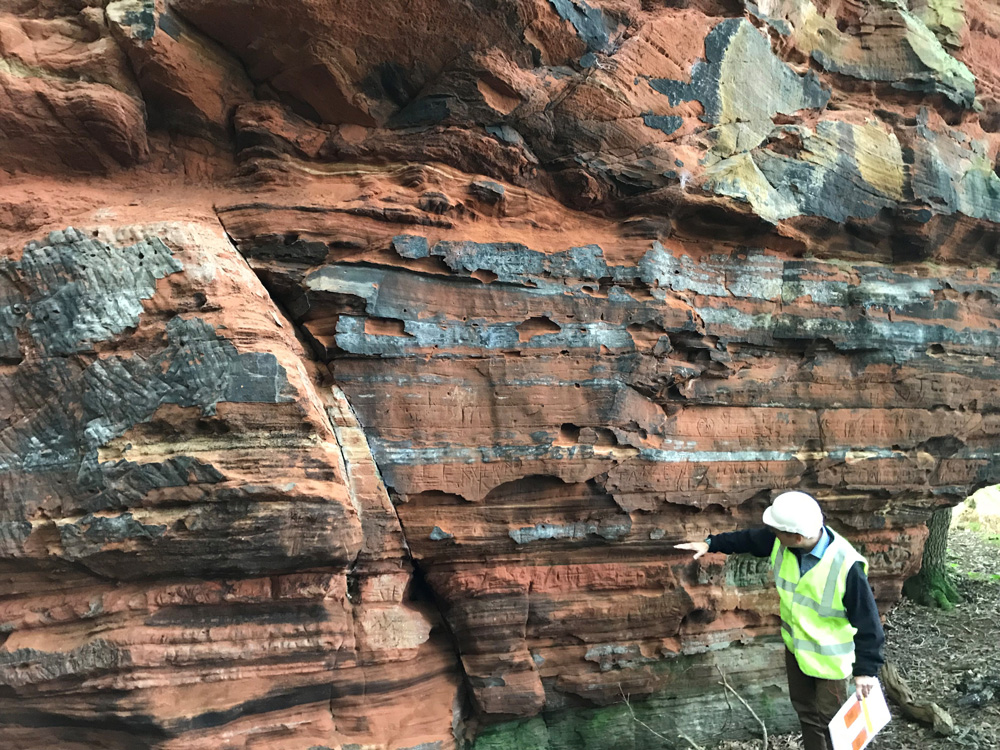New energy technologies are making geological knowledge more important than ever, but often in unexpected ways. Welcome to an interview with Mike Stephenson, head of the British Geological Survey’s Decarbonisation Programme, which has a wide range of projects that range from geothermal, CCS, compressed air energy storage, to hydrogen storage and heat storage. (AAPG will feature presentations and panel discussions on this topic at ACE 2020 in Houston.)
What is your name and your background?
Mike Stephenson. I’m a geologist but for around ten years before being a geologist I was also a school teacher in a remote school in rural Botswana.
What are your main research interests?
Energy, stratigraphy, palynology and decarbonisation. I presently run the British Geological Survey’s £7million Decarbonisation programme with 120 staff and a range of projects in geothermal, CCS, compressed air energy storage, hydrogen storage and heat storage.
Please describe a few of your projects that you completed in the past, and which led you to the place you are today.
In the first part of my career I worked on Middle Eastern stratigraphy and deep time climate change, but in the early noughties I began working on capacity building projects in the developing world in geological surveys, so I developed an interest in the agenda that has recently resulted in the UN Sustainable Development Goals (SDGs). From this time, I also began to work on broader low carbon geoscience such as carbon capture and storage, gas as a bridge to renewables, and geothermal.

The energy from wind turbines could be stored in salt caverns in the technology of compressed air energy storage (CAES)
What are the main elements in Decarbonisation?
Technologies include decarbonisation of electricity production via renewable sources of power generation, substitution of domestic heating using geothermal energy, use of carbon capture and storage (CCS), and more ambitious technologies such as bioenergy and carbon capture and storage (BECCS) that target negative emissions. Growth in renewable energy supply will lead to increased demand for geological materials (critical metals) to sustain the electrification of the vehicle fleet and other low-carbon technologies.
What are some of the key processes and changes?
As a geological scientist, I see this as a series of fundamental science questions that need answering. Perhaps the most fundamental is the need to characterise rock geochemically and geomechanically. For example we need to understand the composition and properties of deep rock-salt for storage of hydrogen as part of a large-scale regional hydrogen fuel and heating system (a ‘hydrogen economy’). Salt will need to be resilient to pressurisation and depressurization during storage and must maintain its ability to contain the hydrogen safely. If we don’t understand this, the vital role that hydrogen could play in a low carbon economy might not come about.
Also, the geochemical and geomechanical nature of other rock masses from sedimentary, metamorphic to igneous rocks, needs to be understood to predict their performance in hosting geo-energy solutions such as ‘hot-dry-rock’ reservoirs, storage of CO2 and other gases, and tunnelling for pumped storage construction.

Hydrogen buses and the hydrogen economy will need largescale, probably geological energy storage.
This will need strategic investment and a realisation that aspects of decarbonisation will take place in geographical clusters and development corridors where geological and infrastructure conditions are most suited. I wrote abut this in my recent book (Energy and Climate Change, Elsevier, 2018, ISBN: 9780128120217).
Working through an example illustrates this best. The hydrogen economy – the idea that hydrogen can provide a fuel for cells to drive vehicles, heat houses and power industry – will need a substantial geological input. Hydrogen production may in the longer term be through electrolysis of water using excess (renewable) electricity, but in the short term is more likely to be produced by the cheaper steam methane reforming process which produces CO2 and hydrogen. The CO2 by-product will probably have to be disposed of geologically. The key point here is that geological disposal of CO2 cannot be done everywhere, because only specific geologies are suitable. This means that hydrogen-energy systems will likely work best in regions with geology suitable for seasonal hydrogen storage in salt caverns and CO2 storage in saline sandstone aquifers. An example is the H21 project in the north of England. The project will convert the existing natural gas network in the city of Leeds to 100% hydrogen. A batch of four steam methane reformers on nearby Teeside will produce the hydrogen needed, while the waste CO2 will be captured and stored offshore in the southern North Sea. CO2 capture is well-established and CO2 disposal in geological formations has been demonstrated for over twenty years at the Sleipner Gas Field. Salt cavern storage in the Leeds area will be needed for swings in demand as heating is turned on and off by consumers. As well as heating, the availability of low-cost hydrogen in a gas network could encourage hydrogen vehicles.
As well as geochemical and geomechanical characterisation, geologists will have to understand better the flow of fluids in the deep subsurface, for example hot water, steam, carbon dioxide, natural gas or hydrogen. Fluid flow is important because in technologies like geothermal we want to encourage the flow of useful fluids (hot water), while in other technologies we want to contain fluids, such as in carbon dioxide capture and storage. We’ll also have to be able to monitor and verify through sophisticated imaging and detection.

The Triassic Sherwood Sandstone which could be used to store CO2
What are the implications for geoscientists and petroleum engineers? How can they participate meaningfully in the change?
I think that decarbonisation technologies may be the home in the future for many geologists and engineers that work in the oil industry. Their expertise is perfectly transferable and they will have the knowledge that by working in these areas they will be helping the world to deal with climate change.
Geologists and engineers, like other technical people need also to understand public attitudes to subsurface decarbonisation technologies. Research has been done on the way that the public view carbon capture and storage, but there are few studies of technologies such as compressed air energy storage or hydrogen storage. In densely populated countries in Europe and elsewhere it is clear that very high levels of environmental assurance will be needed to gain a social licence to operate.
Please describe your recent work in the area of sustainability.
Recently I’ve been working on geoscience and the UN Sustainable Development Goals (SDGs). These are a collection of 17 global goals set by the United Nations General Assembly in 2015 for the year 2030. SDG 7 ‘Ensure access to affordable, reliable, sustainable and modern energy’ aims at improving energy access, increasing renewables in the energy mix, energy efficiency and integration and international cooperation and has targets to 2030, and indicators of progress. Many of targets are closely associated with geoscience, for example in exploration and feasibility studies for subsurface renewables such as geothermal, as well as sustainable use of fossil fuels within strict carbon budgets. I’ve written a paper on this subject for a new book that will be coming out this year (‘Geosciences and the Sustainable Development Goals’ Editors: Joel Gill and Martin Smith; https://www.springer.com/gb/book/9783030388140).
What are a few books that you recommend?
Sorry for this but I would nominate my own recent book ‘Energy and Climate Change An Introduction to Geological Controls, Interventions and Mitigations’ (https://www.elsevier.com/books/energy-and-climate-change/stephenson/978-0-12-812021-7). The book looks at the Earth system science context of the formation and use of fossil fuel resources, and the implications for climate change. It also examines the historical and economic trends of fossil fuel usage and the ways in which these have begun to affect the natural system (i.e., the start of the Anthropocene). Finally it covers the range of geological technologies that will be needed for decarbonisation.
Two other great books are David MacKay’s excellent book, ‘Sustainable Energy Without the Hot Air’, which tells you the balance sheet for climate change and energy: what sorts of societal or personal changes can make a difference - and what simply doesn’t move the dial (his Chapter 19: https://www.withouthotair.com/c19/page_114.shtml). Another great book that comes to mind is John Broome’s excellent ‘Climate matters: ethics in a warming world’ (https://www.amazon.co.uk/Climate-Matters-Warming-Amnesty-International/dp/0393063364). Broome is a moral philosopher and his book shows (using a sort of moral cost/benefit analysis) the moral obligation to change – for future generations.